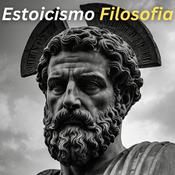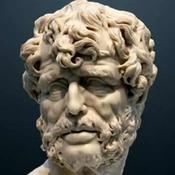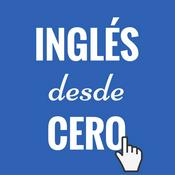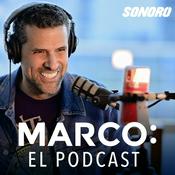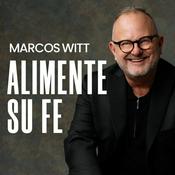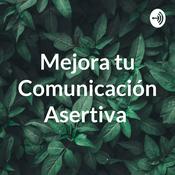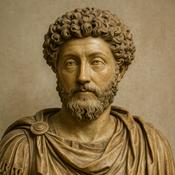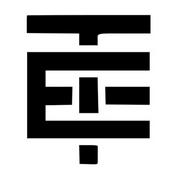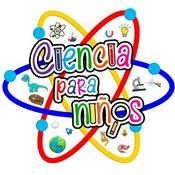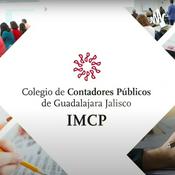450 episodios

Abba in the Philippines? Ancient Echoes of the Name Rediscovered. The Name of God Series Extra
09/11/2025 | 5 min
Echoes of Abba in the Philippine HistoryLong before the first missionaries arrived, the ancient peoples of the Philippines already spoke a name for the Father — Abba.From pre-colonial records to early explorer accounts, these echoes remain — whispers of a time when the Creator was known by His true Name.This short film explores the ancient roots of faith in the East — revealing how the worship of the Most High did not begin in the West but was preserved in the islands of gold.Could this be more than coincidence? Could these “echoes of Abba” be remnants of a covenant older than empire?📖 Learn More in our NEW Children's Book Series:➤ The Name of Yahuah — Adventures in the Light Series (for children and families)➤ Restore the Name: The Covenant Voice Returns — book & study edition. Coming Soon!➤ Calling on His Name — College / High School study guide. Coming Soon!🌐 Resources & Free eBooks:TheGodCulture.orgFoundationsRising.org— A Foundations Rising Production | From The God Culture“And from the rising of the sun, My Name shall be great among the nations.” — Malachi 1:11#Abba #Yahuah #TheGodCulture #FoundationsRising #Philippines #Ophir #SacredName #BiblicalTruth #RestoreTheName #IslesOfGoldSupport the show

The Final Harvest: The True Season of Messiah’s Return - Part 2: Wheat vs. Tares
30/10/2025 | 21 min
https://youtu.be/f4AzxgarUrcPart 2 of our Fall Feasts prophecy series continues with the most powerful revelation yet:The pattern of the Spring and Fall Feasts reveals the entire prophetic timeline — from Messiah’s first coming to His return at the final harvest.We’ll examine the parable of the Wheat and Tares (Matthew 13), the resurrection in 1 Corinthians 15, and the final harvest in Revelation 14 to show how Yahusha was planted during Passover and Unleavened Bread, and why the harvest of His people happens in the Fall Feasts — Trumpets, Atonement, and Tabernacles.🌾 In This Study You’ll Learn:The prophetic meaning of each Feast:Passover → Seed Planted | Pentecost → Early Harvest | Trumpets → Gathering of the Elect | Atonement → Judgment | Tabernacles → Elohim Dwelling with ManWhy the wheat and tares grow together until the end of the ageHow the Spring Feasts foreshadow Messiah’s first coming and the Fall Feasts His returnWhat Enoch prophesied about the final three “weeks” of world historyWhy knowing the season (not the date) of His coming fulfills ScriptureNo, we do not know the day or the hour — but yes, we can know the season.The Feasts of YHWH are not shadows of the past; they are blueprints of what’s to come.📖 Scriptures Covered:Matthew 13 • John 12:24 • 1 Corinthians 15:20-23 • Revelation 14:14-15 • Enoch 92-93 • Leviticus 23✨ Stay Awake. Trim Your Lamp. Be Ready for the Harvest.🔔 Subscribe for more studies on prophecy, the Feasts, and the Word.🌐 Visit TheGodCulture.org and click Subscribe for direct updates.Shalom and Yah Bless!Support the show

The Final Harvest: The True Season of Messiah’s Return - Part 1
29/10/2025 | 22 min
https://youtu.be/A37KsYb8OewMany have claimed the rapture would happen on the Feast of Trumpets — and every date has failed. But Scripture gives us something far better than speculation: a prophetic pattern.In this study, we’ll uncover how the Fall Feasts — Trumpets, Atonement, and Tabernacles — reveal the season of the Second Coming, just as the Spring Feasts foretold Yahusha’s first coming.We’ll connect Matthew 24, the Parable of the Wheat and Tares (Matthew 13), and Revelation 14’s Final Harvest, showing how Yahusha was “planted” during the Spring Feasts and returns during the harvest season in the Fall.No, we do not know the day or the hour — but Scripture tells us we can know the season.Join us as we test this Biblically and expose false date-setters once and for all.📖 Topics Covered:The prophetic pattern in the Fall FeastsWhy the rapture is not on the Feast of TrumpetsThe connection between Yahusha’s parables and Revelation’s harvestThe true meaning of Trumpets, Atonement, and TabernaclesWhat “watching” really means according to Messiah🔔 Subscribe and Prove All Things!🕊️ Shalom and Yah Bless!#TheGodCulture #FeastOfTrumpets #SecondComing #Prophecy #FallFeasts #BiblicalFeasts #Yahusha #EndTimes #BibleProphecy #FinalHarvest #Matthew24 #Revelation14 #Atonement #Tabernacles #RaptureMyth #ProveAllThings #TGCPhilippines #MessiahReturn #HebrewRoots #TruthInScriptureSupport the show

🎬 Revelation 20 UNDERSTOOD (Part 3) — The Final Judgment REWINDS, Not Repeats
24/10/2025 | 18 min
What if Revelation 20 doesn’t show TWO judgments… but ONE powerful Day of Judgment REPLAYED from Heaven’s vantage point?In this final installment, we prove that John is not fast-forwarding 1,000 years into a second judgment — he’s rewinding to complete the SAME DAY already seen.🔥 In this episode, we break down:✅ Why the Great White Throne is NOT a separate second judgment✅ How “earth and heaven fleeing away” proves this is the first Day of Judgment✅ Why the “Book of Life” opens ONLY ONCE — not twice✅ Why no believers fall after Satan’s release✅ Why there is NO “second resurrection for the wicked”✅ How Scripture (John 5:25–29, Heb. 9:27) confirms a single global resurrection & judgment📜 Revelation is not a straight timeline — it’s layered visions.John sees Satan’s end… then REWINDS to show humanity’s final judgment from Heaven’s view.This teaching dismantles modern doctrines that insert a second rebellion of humans, a second second-death, or a second re-creation of Earth — all of which would break Scripture.📖 Referenced in this video:Revelation 20:6, 11–15Revelation 13:8, 17:8John 5:25–29Hebrews 9:27Isaiah 58:12 (Restorer of the Foundations)📌 Read the full Smoking Quill blog breakdown here👉 TheSmokingQuill.org (link placeholder)📺 Missed Part 1 or 2? Watch the full mini-series now!👉 Playlist: Revelation 20 Understood Series✍️ Support this teaching — LIKE, COMMENT, SHARE!💬 What part of this teaching impacted you most?⬇️ Drop a comment below and let's discuss Scripture together.📬 Stay in the Loop (No Algorithm Needed)Sign up at TheGodCulture.org — get direct alerts for new studies, music, conferences & book releases.🙏 Always remember:“Prove All Things… Hold Fast That Which Is Good.” – 1 Thess. 5:21Yah Bless!#Revelation20 #GreatWhiteThrone #DayOfJudgment #OneJudgment #BiblicalTruth #BookOfLife #SecondDeath #FirstResurrection #EndTimesExplained #SmokingQuill #TheGodCultureSupport the show

The First Resurrection & The Second Death: Revelation 20 Fully Explained | The God Culture
19/10/2025 | 8 min
Welcome back to The God Culture.Today, we’re diving deep into Revelation 20 — one of the most misunderstood passages in all of Scripture.Many have been taught multiple resurrections or separated judgments, but the Bible says otherwise.This chapter defines two outcomes, not two resurrections:The First Resurrection — for believers who reign with Messiah.The Second Death — for the ungodly, consumed in final judgment.In this teaching, we reveal how Yahusha’s return, the Day of Judgment, and the 1,000-year reign all align perfectly with the prophetic record — from Matthew 25 to 2 Esdras, 1 Enoch, and Jubilees. There is no delay between resurrection and judgment. It all happens in one day — the Day of Yahuah.Chapters / Timestamps (optional for YouTube Chapters)0:00 – Introduction1:42 – What Revelation 20 Actually Says4:15 – The First Resurrection (Believers Only)8:20 – The Second Death (The Wicked Consumed)13:10 – Doctrinal Clarifications and Greek Analysis17:55 – All Judged on One Day22:00 – Second Temple Witnesses (2 Esdras, Enoch, Jubilees)26:30 – Summary: The True Day of Judgment29:00 – Final Thoughts & Call to StudyScriptural References:Revelation 20 | Matthew 25 | John 5 | Hebrews 9:27 | Acts 17:31 | 2 Thessalonians 1 | 2 Esdras 7 | 1 Enoch 90 | Jubilees 23 | Tobit 13Watch Next:🔥 The Name of God Series – Yahuah RestoredRead More on Our Blog:🔗 The Smoking Quill – Full Research Article🔗 TheGodCulture.orgSupport the Work:🕎 Like, Share & Subscribe.🔔 Sign up on our website for direct notifications (YouTube won’t always alert you).📚 Explore our books worldwide on Amazon – The Search for King Solomon’s Treasure, Rest: The Case for Sabbath, and Restore the Name: The Covenant Voice Returns.#TheGodCulture #Yahuah #Yahusha #BibleProphecy #Revelation20 #EndTimes #FirstResurrection #SecondDeath #DayOfJudgment #BookOfRevelation #MessianicTruth #BibleStudy #Scripture #PhilippinesProphecy #TheSmokingQuill #FoundationsChannel #ProveAllThings #YahuahReignsSupport the show
Más podcasts de Educación
Podcasts a la moda de Educación
Acerca de The God Culture
Escucha The God Culture, 6 Minute English y muchos más podcasts de todo el mundo con la aplicación de radio.net

Descarga la app gratuita: radio.net
- Añadir radios y podcasts a favoritos
- Transmisión por Wi-Fi y Bluetooth
- Carplay & Android Auto compatible
- Muchas otras funciones de la app
Descarga la app gratuita: radio.net
- Añadir radios y podcasts a favoritos
- Transmisión por Wi-Fi y Bluetooth
- Carplay & Android Auto compatible
- Muchas otras funciones de la app


The God Culture
Descarga la app,
Escucha.

